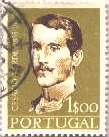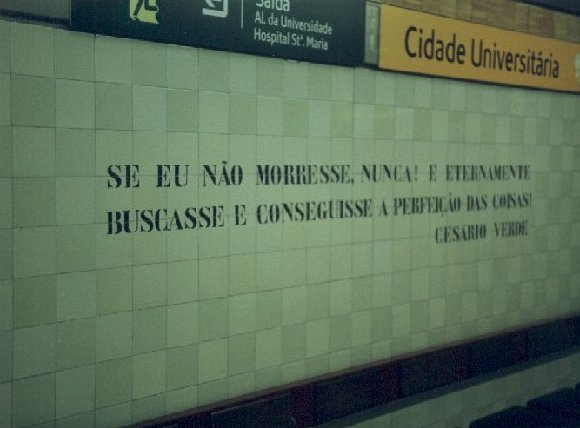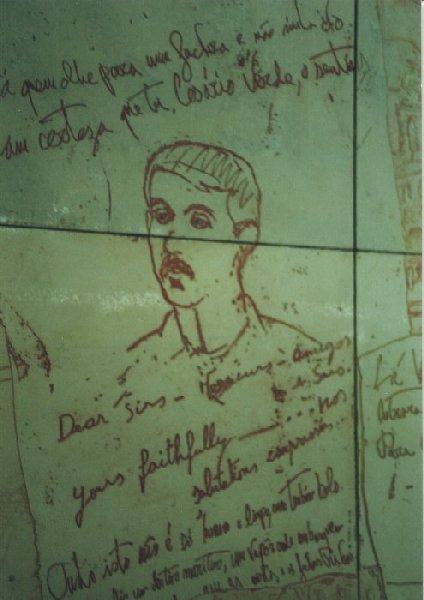CESARIO VERDE page |

Cesário Verde
Portuguese Poet /Poeta Português, 1855-1886
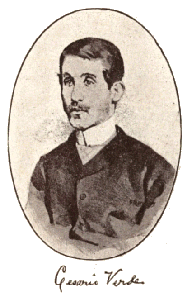
Cesário Verde, as depicted by Columbano Bordalo Pinheiro
in the frontispiece to the Livro de Cesário Verde
| Aims | Biography | The Poetry | Cesário Verde Today | Links |
|  Cesário VerdePortuguese Poet /Poeta Português, 1855-1886 Cesário Verde, as depicted by Columbano Bordalo Pinheiro in the frontispiece to the Livro de Cesário Verde
|
 18 October 2016
18 October 2016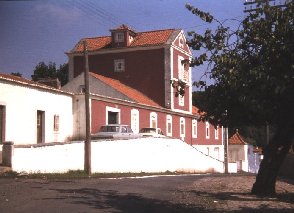
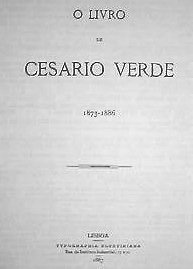
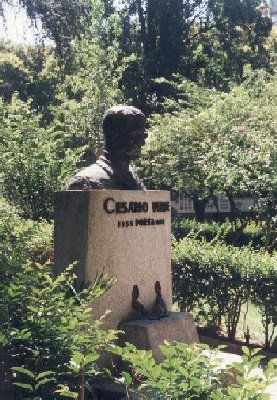

 Cesário's father was also the owner of an ironmongery business with premises at numbers 2 to 8 of the Rua dos Fanqueiros, on the corner of that street and the Rua da Alfândega, only yards from the Praça do Comércio in central Lisbon. Cesário, as the eldest son of the family, ran the business for a number of years prior to his early death. His poetic output was limited by his commercial responsibilities and during his lifetime he earned little acclamation for his poetry. On his death at Paços do Lumiar, in the northern suburbs of Lisbon, on 19 July 1886, his poetry remained scattered amongst various newspapers of Lisbon and Oporto, and in a number of literary journals.
Cesário's father was also the owner of an ironmongery business with premises at numbers 2 to 8 of the Rua dos Fanqueiros, on the corner of that street and the Rua da Alfândega, only yards from the Praça do Comércio in central Lisbon. Cesário, as the eldest son of the family, ran the business for a number of years prior to his early death. His poetic output was limited by his commercial responsibilities and during his lifetime he earned little acclamation for his poetry. On his death at Paços do Lumiar, in the northern suburbs of Lisbon, on 19 July 1886, his poetry remained scattered amongst various newspapers of Lisbon and Oporto, and in a number of literary journals.
The other Lisbon addresses at which Cesário lived included:
In 1887, Cesário's close friend, António José da Silva Pinto, published a limited edition of two hundred copies of Verde's poetry under the title O livro de Cesário Verde, (Lisboa: Typographia Elzeveriana). This compilation included only twenty-two of the forty known works of the poet. The edition also included a number of textual alterations, deletions, additions and changes of title. The poems were also arranged in a non-chronological sequence, divided into two sections entitled Crise romanesca and Naturais, comprising six and sixteen poems respectively. For decades the Livro was accepted as the authoritative and complete works of Cesário Verde. Work by Luís Amaro de Oliveira, Pedro da Silveira and, later, Joel Serrão located a number of other extant poems and variants of those published in the Livro. These appeared in various editions of Serrão's Obra completa de Cesário Verde.
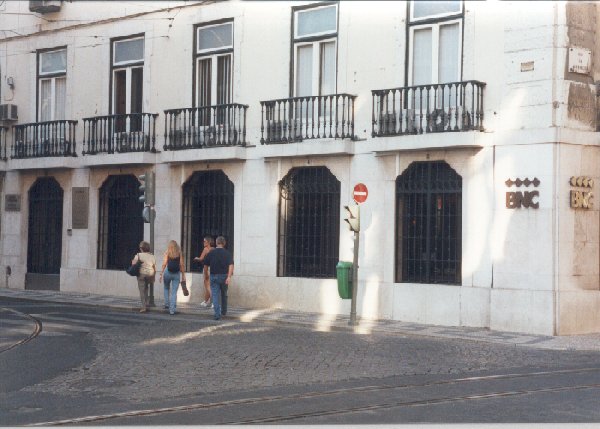
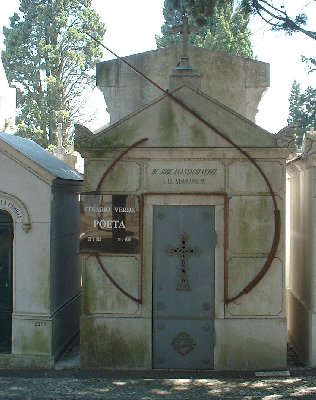
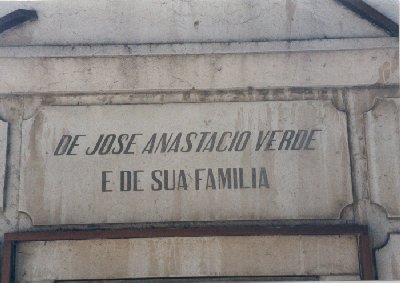
In 1999 Ângela Marques produced an edition which was by far the nearest to this ideal in her Cesário Verde: obra poética e epistolografia, (Porto: Lello, ISBN 972-48-1767-9).
Also using a chronological approach is Canticos do realismo e outros poemas [and] 32 cartas, Cesário Verde, edição Teresa Sobral Cunha, Lisboa: Relogio d'Agua, 2006. (ISBN 972-708-881-3)
A so-called "texto definitivo" produced by Ricardo Daunt in Brazil in 2013 (based on his 2012 thesis) does not merit this self-description. It purports to produce the poems published in Cesário's lifetime, in chronological order, which is a laudable goal. But Daunt has arranged the poems which were not published in Verde's lifetime thematically by his own conjecture as to where they fit in the chronology. What is even more odd, although arranging the poems published in Cesário's lifetime in chronological order, he bizarrely uses the posthumous poem titles for those works culled from the 1887 Livro, for which we have zero evidence that these titles were the poet's rather than the editor, Silva Pinto's.
For instance, Daunt prints 22 stanzas which he has entitled "Setentrional" rather than "Cantos da tristeza", which was the title under which this longer version of the poem appeared during the poet's lifetime. "Setentrional" was a title only found in the posthumous Livro where it had only 13 stanzas.
Another illustration of inconsistency is that he also omits the original over-arching title, "Fantasias do impossivel", from the three poems that originally appeared under that name. And he inserts Humilhações into the known 1874 publications with no justification other than thematic conjecture. The work is entitled Obra poético integral de Cesário Verde, 1855-86: texto definitivo, Lisboa: Dinalivro, 2013.
 Further Reading
Further Reading
John Laidlar, 'Cesário Verde: the need for a new edition of his poetry',Portuguese Studies, Vol.1, (1985)
| Cesário's Poems | ||
|---|---|---|
| Title | Pub'n Date | In |
| A forca | 12.11.1873 | Diário de Notícias (Lisboa) |
| Num tripúdio de corte rigoroso | 12.11.1873 | Diário de Notícias (Lisboa) |
| Ó áridas Messalinas | 12.11.1873 | Diário de Notícias (Lisboa) |
| Eu e ela | 03.12.1873 | Diário da Tarde (Porto) |
| Lúbrica | 03.12.1873 | Diário da Tarde (Porto) |
| Ao Diário Ilustrado | ---.01.1874 | -------- |
| Ecos do realismo: Impossível! | 20.01.1874 | Diário da Tarde (Porto) |
| Ecos do realismo: Lágrimas | 21.01.1874 | Diário da Tarde (Porto) |
| Ecos do realismo: Proh pudor! | 22.01.1874 | Diário da Tarde (Porto) |
| Ecos do realismo: Manias! | 23.01.1874 | Diário da Tarde (Porto) |
| Heroísmos | 07.02.1874 | Diário da Tarde (Porto) |
| Cantos da tristeza | 14.02.1874 | Diário da Tarde (Porto) |
| Cinismos | 12.03.1874 | Diário da Tarde (Porto) |
| Fantasias do impossível:Caprichos | 22.03.1874 | Diário de Notícias (Lisboa) |
| Fantasias do impossível:Esplêndida | 22.03.1874 | Diário de Notícias (Lisboa) |
| Fantasias do impossível:Arrojos | 22.03.1874 | Diário de Notícias (Lisboa) |
| Vaidosa | --mid-1874 | A Harpa (Porto) |
| Flores venenosas-I, Cabelos | 18.10.1874 | A Tribuna (Coimbra) |
| Melodias vulgares | 04.12.1874 | Jornal da Tarde (Porto) |
| Cadências tristes | 27.12.1874 | A Tribuna (Coimbra) |
| Deslumbramentos | ----02.1875 | Mosaico (Coimbra) |
| Humorismos de amor | 11.04.1875 | A Tribuna (Coimbra) |
| Ironias do desgosto | 26.09.1875 | A Tribuna (Coimbra) |
| Desastre | 30.10.1875 | O Porto |
| Nevroses | 18.03.1875 | O Porto |
| Na cidade | ---.11.1876 | A Evolução (Coimbra) |
| Num bairro moderno | -------1878 | Diário de Notícias (Brinde) |
| Merina | 01.05.1878 | Ocidente (Lisboa) |
| Sardenta | -------1878 | Renascença (Porto) |
| Cristalizações | ----06.1879 | Revista de Coimbra |
| Noitada | 24.08.1879 | Novidades (Lisboa) |
| Num álbum | ---09.1879 | Boletim do Cancioneiro Português |
| Em petiz | 29.09.1879 | Diário de Notícias (Lisboa) |
| Manhãs brumosas | -late--1879 | Renascença (Porto) |
| O sentimento dum ocidental | 10.06.1880 | Portugal a Camões (Porto) |
| Nós | 05.09.1884 | Ilustração Portuguesa |
| Provincianas | ||
| Humilhações | ||
| De verão | ||
| De tarde | ||
| Subindo | Attributed by some to CV but very dubious |
